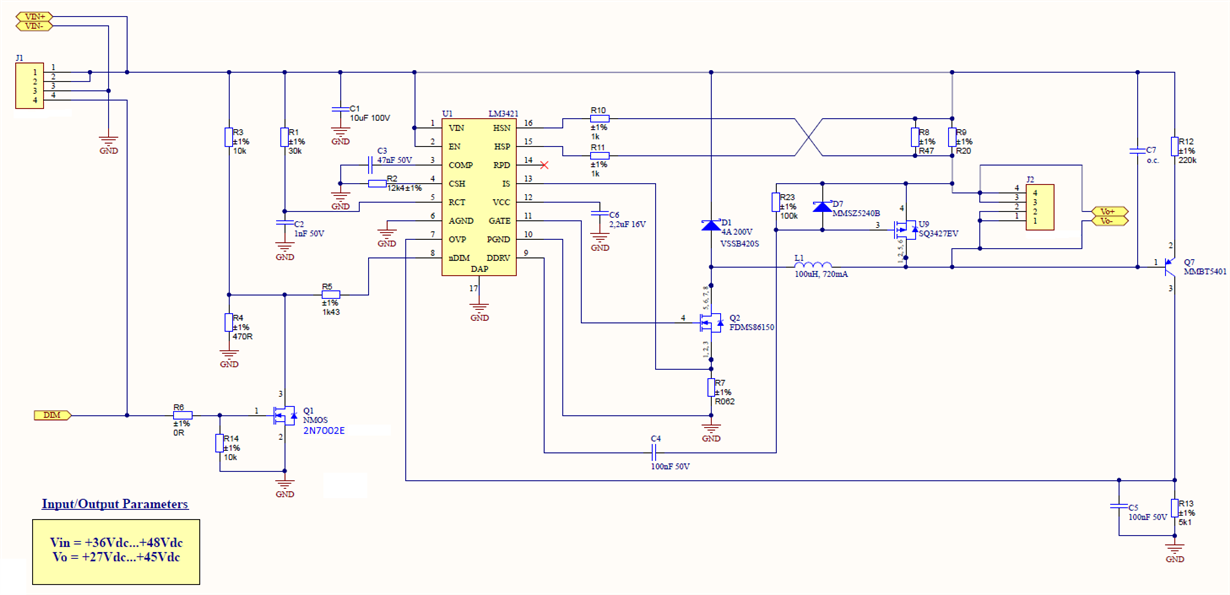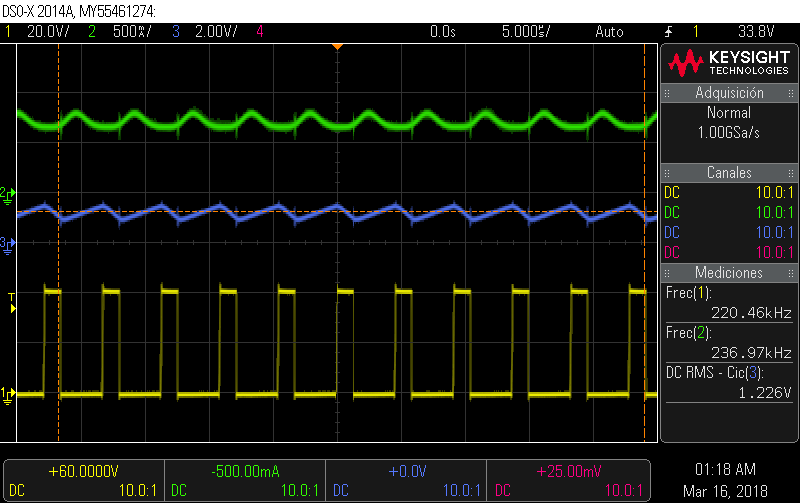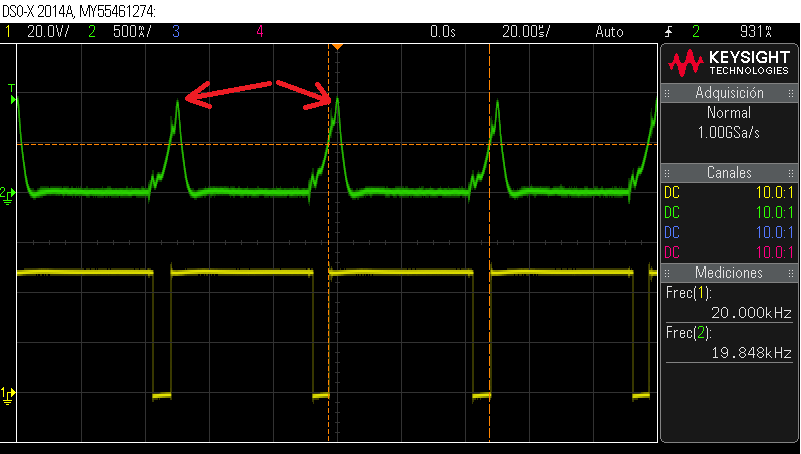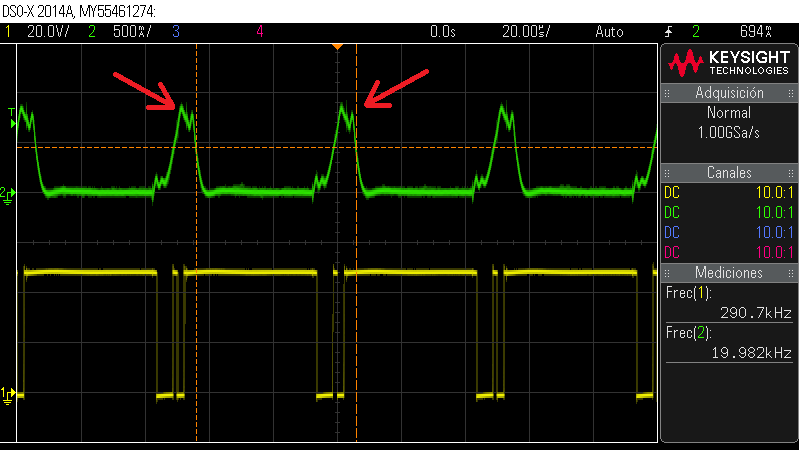Other Parts Discussed in Thread: LM3431, , LM3423, TPS92515
Hello,
I am having problems with LM3431 configured as Buck Converter to drive leds at 700mA when dimming. I attach you the schematic for your perusal.
I have designed it following the guidance included in the datasheet of this controller and it works really fine when it is used in fixed current. The output current is set up at 700mA and it remains without changes for the full range of the input voltage (from 36 to 48V).
In fact, if I change the output load from 9 leds (Vf = 3V each, so I have 27V approx.) to 15 leds (Vf = 3V each, so I have 45V approx.) the output current keeps in the expected value (700mA) and the converter is really well adjusted.
The issue appears when I change to dimming mode and I connect a 5V to 10V digital input voltage to the LM3421 through the mosfet input that manages the input for the dimming purposes.
After testing stage, for frequencies that goes from 1KHz to 10KHz works fine and the lineality is acceptable and accurate. But for frequencies that goes from 10KHz to 20KHz and specially for 20KHz I have detected that the dimming cannot be performed well and the Buck set up the DCM mode until a minimum of 40 or 50% is reached. This is more perceptible when I have got much difference between input and output (48Vinput and 27 output is more sensitive than for 36Vinput and 27Voutput).
I mean, when I change from 100% to 0% the dimming seems to be correct, but when I try to increase from 0% to 100% it only works sometimes if I increase slowly the dimming steps (I have always done this by steps of 1%, i.e.: 0%, 1%, 2% and so on). After this "slowly-start", so to speak, I can reach 100% without problems. I attach you a picture after a "slowly-start" with 50% dimming signal.
Ch1: Vsw at node, Ch2: Io
On the other hand, If I speed up the dimming step and I do it faster (I do it moving faster the rolling button of the function generator connected to the mosfet), DCM mode is stablished and it dissapears when I reach 40% or 50%, approximattely. Here, you can see the Isw output current (CH2) and the Vsw (CH1) at switching voltge node.
I cannot understand why this happens because the datasheet specifies that for Buck converter PWM dimming can be up to 20KHz or even more.
Is there any problem between frequency switching and frequency for dimming signal? Which is the limit for the frequency of the dimming signal when I set the frequency switching?. Does the Cdim and RPU component values have to change for fixing it?
It seems as if the LM3421 would not accept fast dimming step changes for 20KHz. It does not occurs for the rest of frequencies.
Thank you all in advance. Hope you can help me because I have tried to increase frequency switching signal and I am still with the same problem.
Regards.









